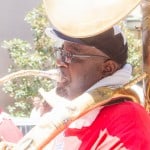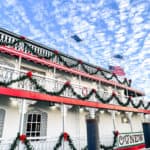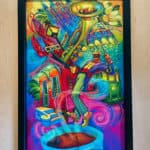Whether you call it Pirate Alley, Pirate’s Alley, or Pirates Alley, the legends don’t care. Explore the Big Easy with French Quartours and learn about one of the strangest real life stories in history.
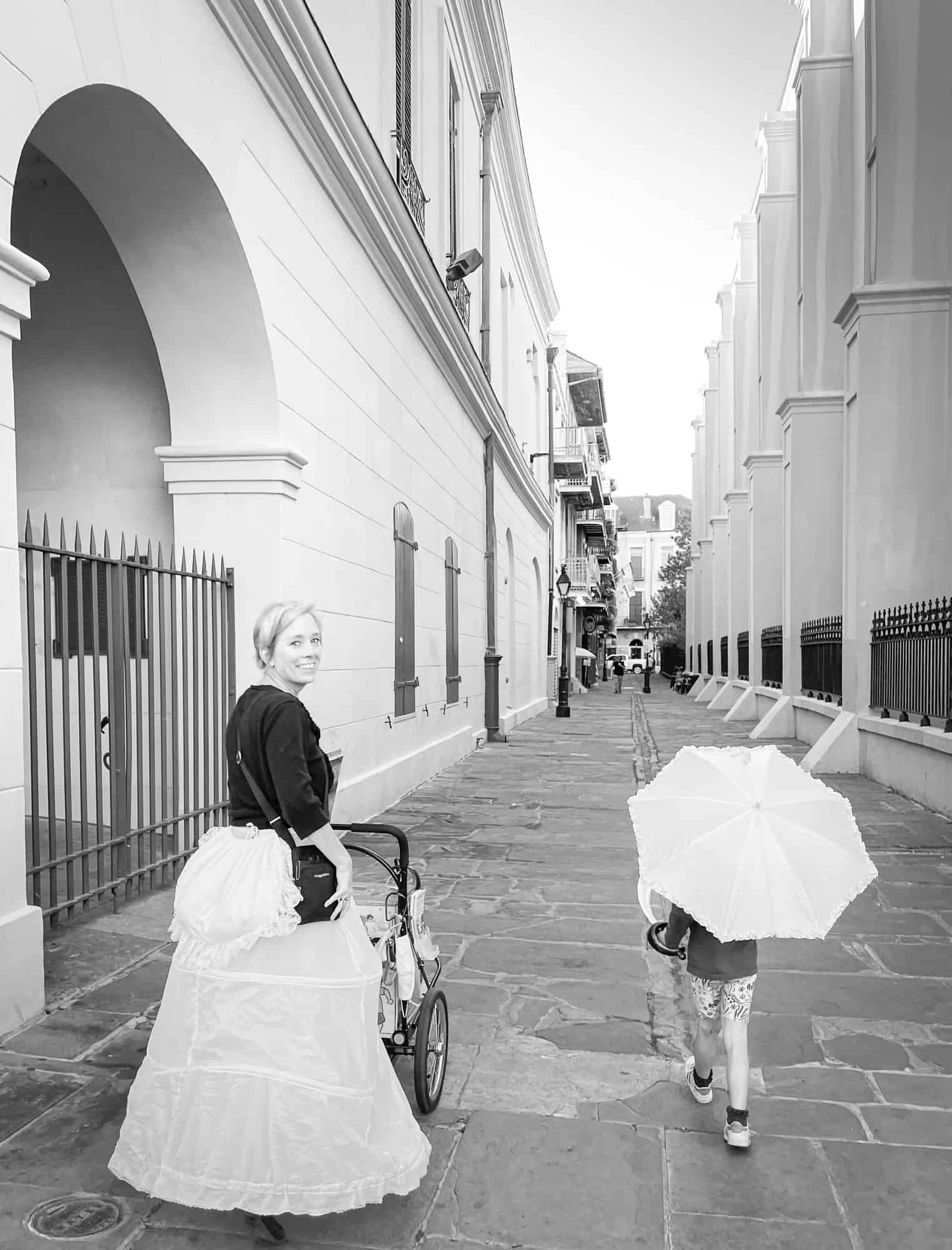
Pirates Alley in New Orleans
Not every city has a street named Pirates Alley. But even among those that do, it’s probably not common to see the inky crescent of a pirate hat bobbing along the walkway.
It’s stark and suspiciously…small. The hat, bright with skull and crossbones, comes with a gleaming cutlass and a clenched hand which pauses outside the bars of a dungeon. Another pause. And then a small drawstring bag is retrieved, fingers uncurling, gold coins tumbling. Treasure, discovering.
Chocolate. Gold coin chocolate, the richest treasure of all.
Disclosure: I travelled to New Orleans with my family as part of a paid partnership with New Orleans Tourism. As ever, as always, I kept the right to write what I like. Otherwise, there’s just no point. Also, if you book or buy through some of the links on this page, we may earn a small commission at no extra cost to you. Cheers!
Where is Pirates Alley?
Pirates Alley connects Rue Royale and Rue Chartres on the side of the St Louis Cathedral in New Orleans.
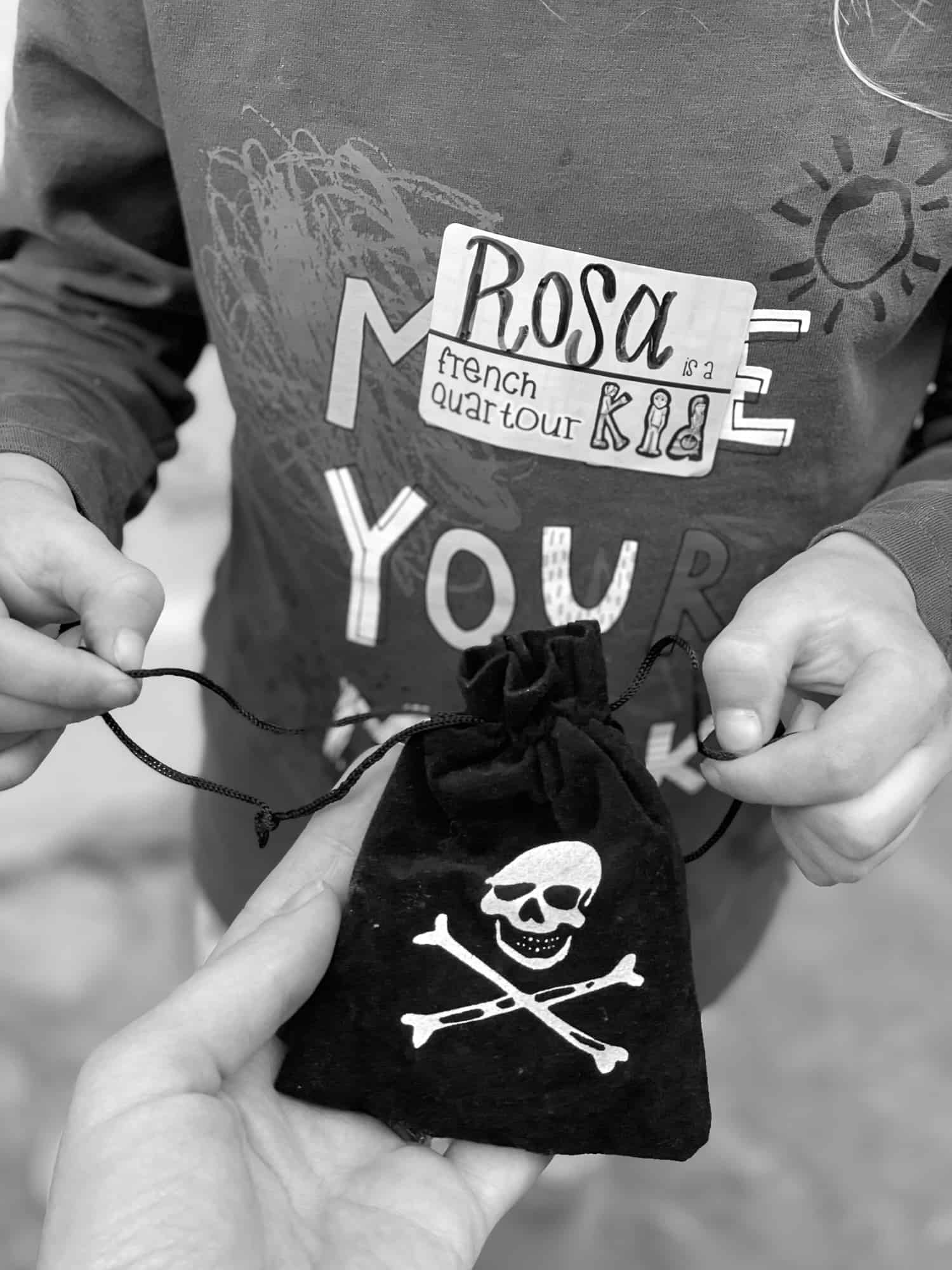
Pirate Alley on French Quartours
Pirates Alley stars as the final stop on our French Quartours tour, an excursion aimed at children, that ranged from the Mississippi River through Jackson Square to this spot: Pirate Alley. Find out more about what to do in New Orleans with kids here.
The history of Pirates Alley itself is somewhat obscure. Was it a meeting place outside the dungeon or prison? Did furtive deals take place between the cathedral and the governor’s mansion? Were people robbed as they headed to church?
What is not obscure, however, is the real role that pirates played in setting up the city of New Orleans. And, arguably, the whole of the United States as we know it today.
Let’s go back in time and learn more about this surprising chapter in history…
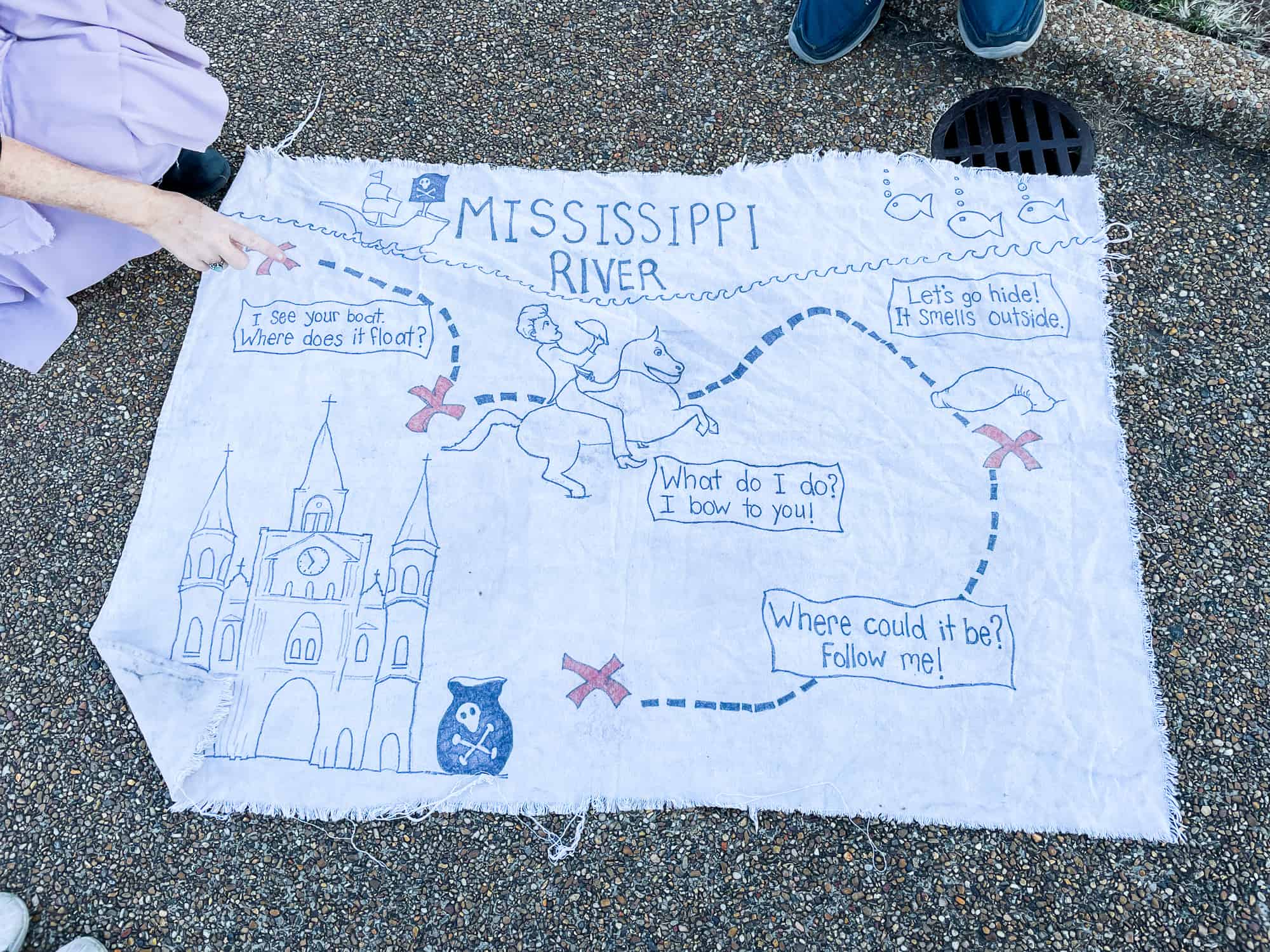
Pirate History in New Orleans
We met Jill by the French Market, a curious collection of alligator skulls, Cajun hot sauce and voodoo paraphernalia.
Jill led us straight to the patch of land between the Mississippi and Jackson Square, where, as luck would have it, we discovered an abandoned treasure map.
She produced real raw cotton to explain how trade fuelled the growth of the Crescent City. Although the area had been home to the Houma Native Americans for centuries, it was the decision of the French to found a city here in 1718 that led to the creation of modern day New Orleans.
Were There Really Pirates in New Orleans?
Yes! Although they were more often called privateers. The difference between a pirate and a privateer is paperwork. Pirates with the backing of a government “back home” could invade and plunder as privateers.
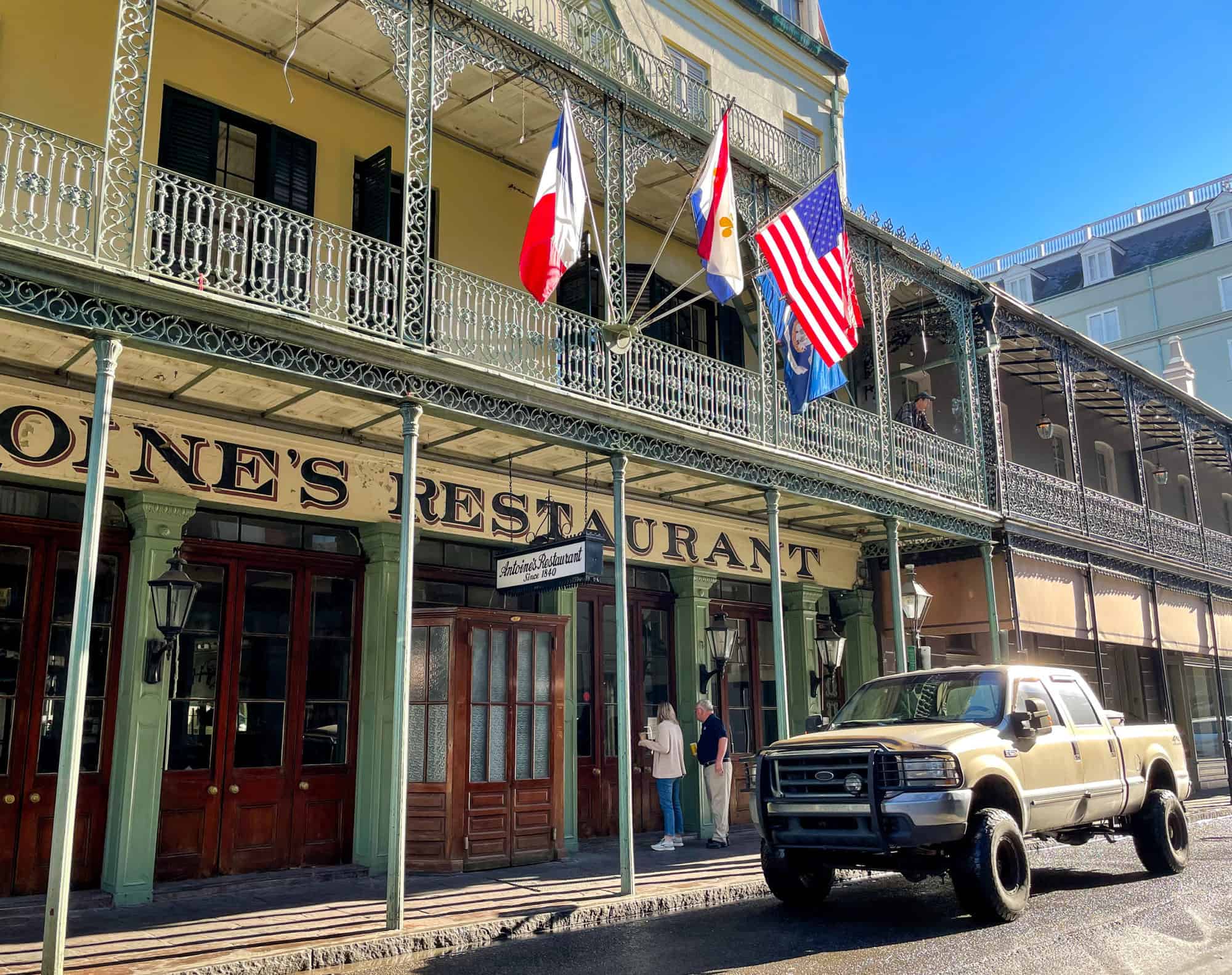
A walk around the French Quarter today displays beautiful wrought iron railings, balconies, cobblestones and a chic sense of grandeur.
But pretty as it looks today, the reality used to be quite different.
Beneath the hoop skirts and top hats, Jill reminded us that people had no toilets in those early Nawlins days. Instead, they used chamber pots, emptying their contents across those intricate railings into the streets below. People carried nosegays to disguise the stench as they walked through the streets in the day.
To clean up the toxins in their blood, they attached leeches to their skin and let them suck their blood.
But as fascinating as these tales of everyday life are, what about the pirates?
The Story of Pirates and the Battle of New Orleans
The governments of the US, Britain, France and Spain weren’t the only ones to notice how well-placed New Orleans was for trade.
Pirates and privateers had noticed as well. And, with a sluggish response to law enforcement given the horses and distances involved, several pirates managed to establish mini city-states: lands they operated as if they owned them, smuggling contraband tax-free in and around the Americas.
One such privateer was Jean Lafitte, together with his brother Pierre.
When the US government finally did catch up with the pair, they had another problem. A battle with Britain over land in the North and South and not enough soldiers to defend the territories.
A deal was struck. In exchange for a pardon, pirate Jean Lafitte would join the fight on the US side, together with his band of rogue traders and scoundrels.
The pirates prevailed. The US won in the south.
And the world we know today stems from that fact.
- Recommended reading: the perfect weekend in New Orleans
Fun Facts About Pirates Alley
- Pirate Alley was officially called Orleans Alley until as late as the 1960s. Then the city changed the name because tourists kept getting lost.
- Pirates Alley runs between the St Louis Cathedral and the Cabildo (the Old Spanish Governor’s Mansion.)
- The Cabildo had a dungeon – perhaps pirates were imprisoned there and that’s where the name comes from?
- William Faulkner’s House is also on Pirate Alley. The American author wrote his first novel, Soldier’s Pay, while living on this street at 625 Orleans Alley as it was then.
- There’s a Pirate Alley Cafe where you can sip absinthe and hang out with someone in a pirate costume. Not really for kids, this idea…
- There is not a lot of evidence to support many of the stories told about Pirates Alley. It’s more a case of relaxing and enjoying the fun ;-)
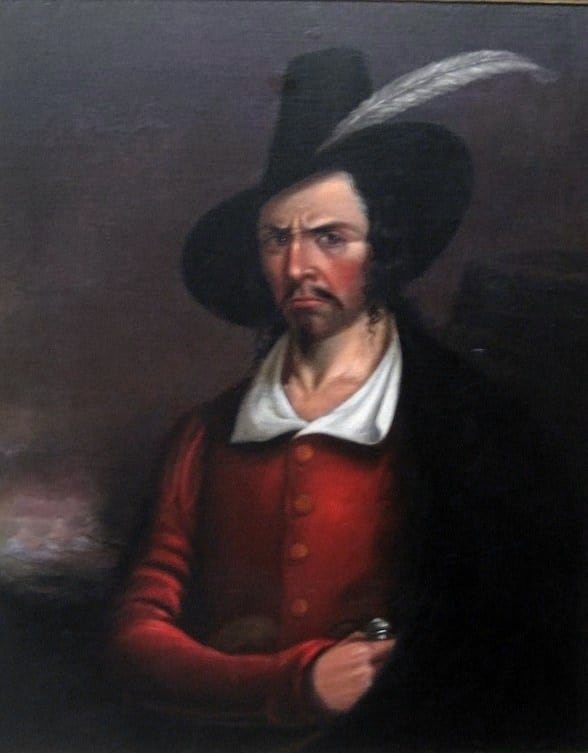
Who Was Jean Lafitte?
Jean Lafitte was a French pirate and privateer with a colourful life of smuggling contraband and engaging with various governments. With his brother, Pierre Lafitte, he smuggled goods through his warehouse in New Orleans until a US Naval Force seized him and his operations in 1807.
In and around New Orleans, he is most famous for joining the US forces to fight off the British in the Battle of New Orleans. That battle formed not part of the American War of Independence but the war of 1812. Other notable events from that conflict involve the British burning down the White House.
So, was Lafitte a hero or an opportunist? And how would history have been changed had he decided to join the other side? It’s hard to say but fun to speculate…
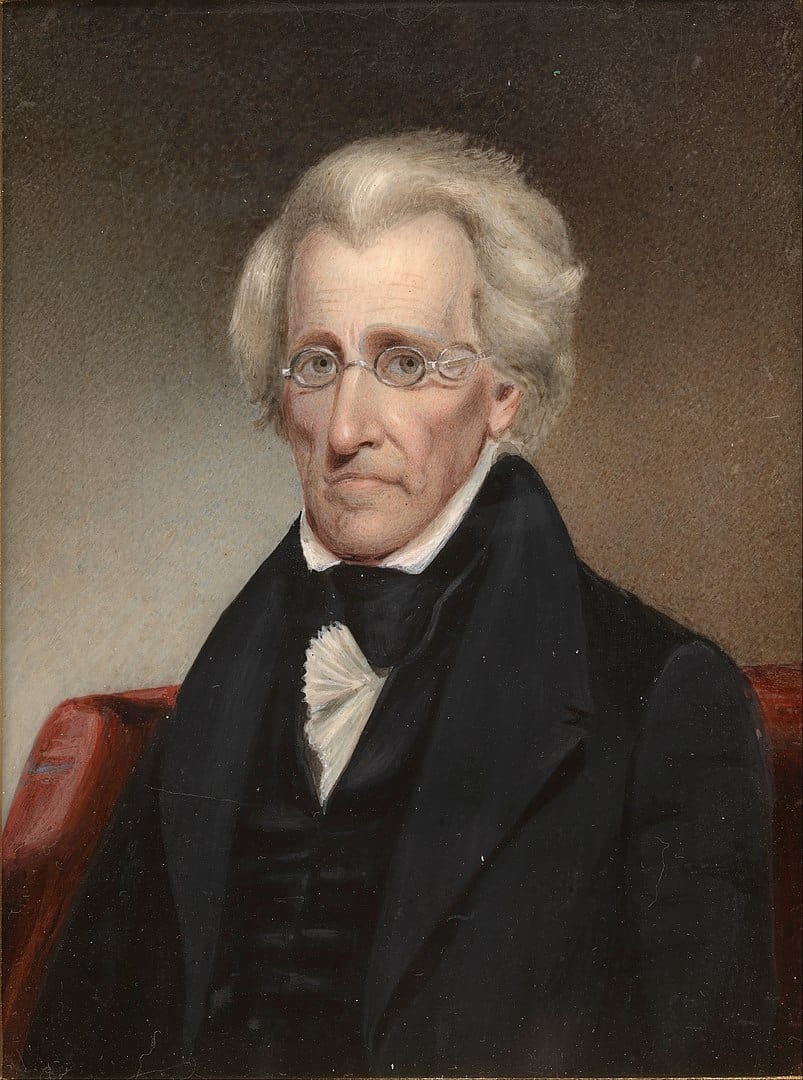
Who Was Andrew Jackson?
General Andrew Jackson is best known in these parts for beating the British in the Battle of New Orleans, with the help of pirate Jean Lafitte. Elsewhere, though, the fact that he went on to become the seventh President of the United States probably registers more highly.
Jackson also founded the Democrat Party and presided over the forced migration of thousands of Native Americans, in a starvation march commemorated by the Trail of Tears.
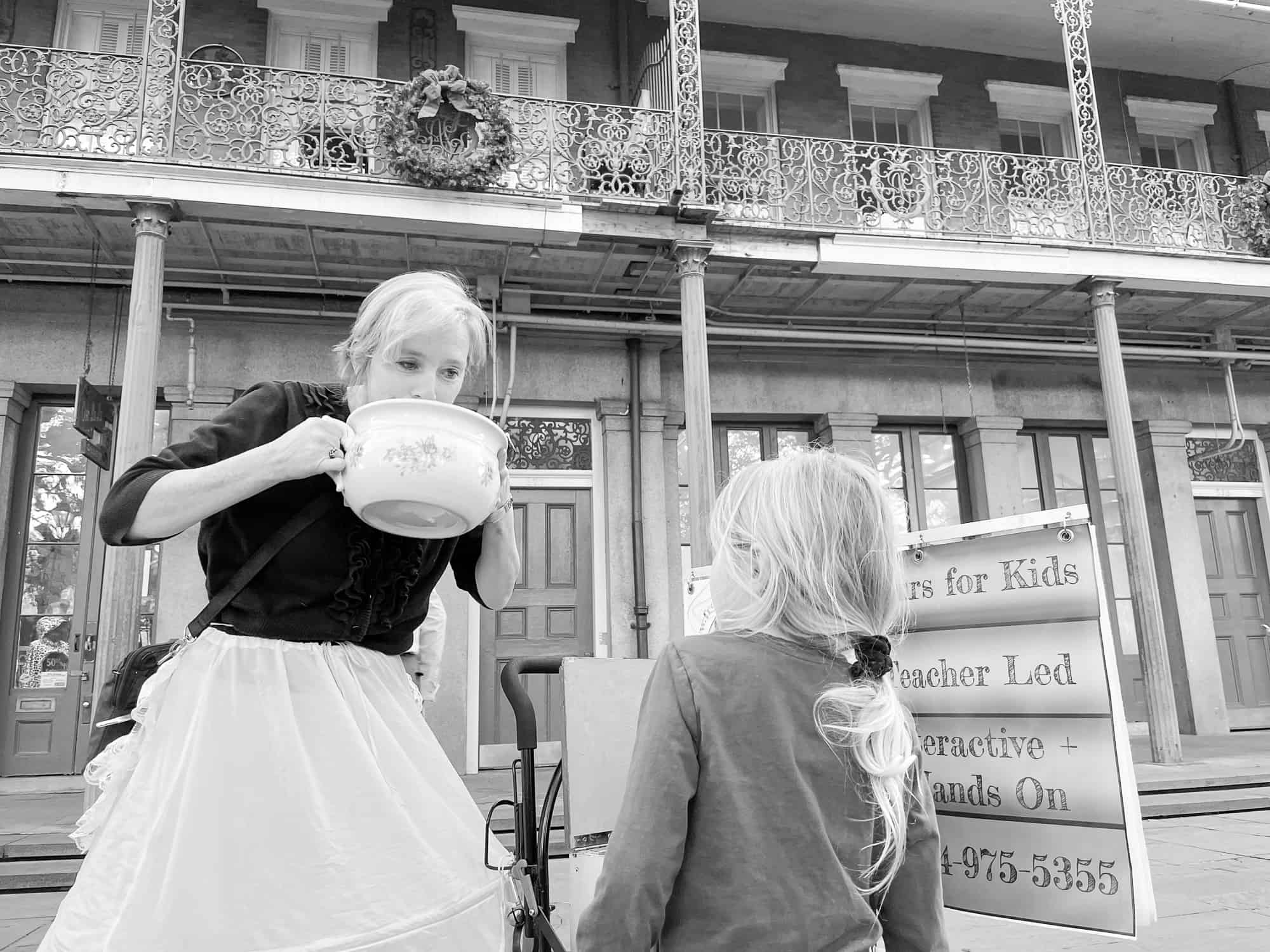
More About French Quartours
For a really fun New Orleans tour, I’d highly recommend meeting up with Jill for one of her French Quartours. She takes her experience of teaching in the classroom and brings it to the streets in a really entertaining yet educational manner.
The Pirate tour comes with a roaming set of props, from period costumes to a treasure map to hygiene products from centuries ago. Kids need to pay attention and solve clues and the tours are age appropriate and adaptable so that no one gets left behind.
And there’s plenty for adults, too. As a Brit, I hadn’t heard much about the Battle of New Orleans and Pirates Alley, except on other tours. But this version of events was far more fun than the rundown of dates and facts given on other tours and in museums.
And if pirates are not your thing? No worries! French Quartours also run Ghost Tours, Bayou Nature Tours, Creole History tours and Twilight Tours. Look out as well for the music tours aimed at teens. And if all that touring made you hungry, don’t forget to stop for beignets at the Cafe du Monde. I guarantee you won’t regret it.
More Things to do in New Orleans with Children
There are SO many amazing and fascinating and fun things to do in New Orleans with kids. In fact, I wrote a whole article about it, in all its 4000 word plus glory. You can read it over here. It is cunningly entitled What to do in New Orleans with Kids. You’re welcome ;-)
More About Travel in New Orleans & Louisiana
- How to spend three days in New Orleans: an itinerary
- The surprising story behind Louis Armstrong’s Wonderful World
- Explore the Deep South with this in depth New Orleans Road Trip Planner
- The secret behind the beignets of Cafe du Monde
- What is the difference between a swamp and a bayou?
- Why a visit to the Tabasco factory is a hot day out
- What Louisiana’s Great River Road is really all about
- How to travel through Alabama from New Orleans
- The best things to do with kids in New Orleans



